Disclosure: This article contains affiliate links. We may earn a commission from purchases at no extra cost to you, which helps our travel content.
The first time I stood at the entrance of Jerash's ancient colonnaded streets, I felt that familiar tingle of wonder—the same sensation I used to get showing my astronomy students their first clear view of Saturn's rings. There's something about ancient ruins under an open sky that connects us to both our human ancestors and the cosmos above. Jordan had been calling to me for years, but it was Jerash—this remarkably preserved Roman city just an hour from Amman—that truly captured my soul with its perfect balance of monumental history and living culture.
Beyond the Oval Plaza: Finding Solitude Among the Stones
While most visitors cluster around the iconic Oval Plaza and the Temple of Artemis (both spectacular, don't get me wrong), Jerash rewards those willing to wander its lesser-known corners. My favorite discovery came on my second morning, when I arrived right at opening time and headed straight to the Northern Theater instead of following the standard route.
With my trusty foldable travel mat tucked under my arm, I found a quiet spot in the upper tiers of the ancient theater. For twenty blissful minutes, I practiced sun salutations as actual sunlight gradually illuminated the 1,800-year-old stage below. A security guard eventually spotted me but, rather than asking me to stop, simply nodded appreciatively at my reverence for the space.
The western residential quarter sees remarkably few visitors despite offering some of the most intimate glimpses into daily Roman life. Here, mosaics that once decorated wealthy merchants' homes tell stories of commerce, beliefs, and aesthetic sensibilities that feel surprisingly relatable across the centuries. Bring a wide-brimmed hat as shade is limited in this section, and the Jordanian spring sun can be surprisingly intense even in April.

💡 Pro Tips
- Visit right at opening (8am) or in the late afternoon (after 3pm) to avoid both crowds and the midday heat
- The Jerash site is much larger than it first appears—wear comfortable walking shoes with good grip for the uneven surfaces
- The South Theater has better acoustics, but the North Theater offers more solitude for contemplation
Stargazing and Tea with Modern Bedouins
My former life as an astronomy professor has permanently shaped how I travel—I'm always looking up, especially in places with minimal light pollution. Jerash offers spectacular night skies just outside the main archaeological zone, and this is where the magic of cultural connection happened for me.
Through my guesthouse host's cousin (connections are everything in Jordan), I arranged an evening with a local Bedouin family who maintain seasonal camps in the hills east of Jerash. For a reasonable fee (about 30 JOD per person including dinner), they welcomed me to their fire circle, where three generations gathered to share stories while preparing zarb—a traditional meal cooked in an underground oven.
As darkness fell, I unpacked my star guide app (worth every penny for its offline functionality) and my compact travel telescope. What followed was one of those transcendent travel moments: my host's teenage children were fascinated by the telescope, while their grandfather began pointing out Arabic star names I'd only read about in astronomy texts. Different cultures, same stars—a perfect metaphor for human connection.
Later, wrapped in a borrowed Bedouin blanket against the spring night's chill, I sipped sweet mint tea while learning about traditional navigation methods that once guided caravans across the region. This experience isn't listed on any tour website—it comes through personal connections and respectful interest in local culture.

💡 Pro Tips
- Learn a few Arabic phrases—even basic greetings open doors to meaningful cultural exchanges
- Bring a small gift for your hosts if invited to a Bedouin gathering—quality tea or coffee is always appreciated
- Pack a lightweight fleece for spring evenings, which can be surprisingly cool in the Jordanian highlands
The Rhythms of Jerash Festival: Ancient Venues, Contemporary Sounds
While my visit coincided with the quieter spring season, I can't write about Jerash without mentioning its renowned summer festival. Having attended similar events at ancient venues in Turkey and Greece, I've marked the Jerash Festival of Culture and Arts (typically held in July) for my inevitable return visit.
What makes this festival unique is its seamless blending of traditional Arabic music, international performances, and the incomparable acoustics of Roman architecture. The South Theater, with its remarkably preserved sound design, hosts everything from Jordanian folk dancers to contemporary electronic music performances that would feel at home in my favorite underground venues back in Birmingham.
For those planning around the festival, book accommodations months in advance—I recommend the noise-canceling earbuds for both travel days and for when you need to retreat from the festival energy. While I typically travel with my larger over-ear headphones, these compact earbuds offer impressive sound isolation without taking up precious packing space.
Even outside festival season, Jerash offers surprising musical encounters. During my spring visit, I stumbled upon a local oud player practicing in the colonnaded forum late one afternoon. As the tourist buses departed, his haunting melodies echoed off ancient stones in a private concert I'll never forget. Sometimes the most memorable travel experiences are the ones you could never plan.

💡 Pro Tips
- If visiting during the Jerash Festival, purchase tickets online in advance through the official website
- Local buses from Amman get extremely crowded during festival days—consider splitting a taxi with other travelers
- Bring a packable picnic blanket for impromptu seating during outdoor performances
Mindful Mornings: Yoga Among the Ruins
As someone who has integrated yoga into my daily routine for over fifteen years, finding spaces to practice while traveling has become second nature. Jerash offers some of the most inspiring settings I've ever unrolled my mat in—though with some important cultural and practical considerations.
The archaeological site officially opens at 8am, but I discovered that arriving by 7:30 often means catching the groundskeepers unlocking the gates early. With a respectful smile and a few Arabic greetings, I was usually welcomed in—giving me precious moments of solitude before the day's visitors arrived.
My favorite practice spot was a flat area near the Temple of Zeus, where morning light streams through partial columns creating natural spotlights on the ancient stone floor. I always kept my quick-dry travel towel handy to place over my mat for extra cushioning against the uneven surfaces.
Important cultural note: while Jordan is relatively progressive, maintaining modesty is essential. I always practice in lightweight pants rather than shorts, and a UPF sun shirt that provides both coverage and protection from the strengthening morning sun. This respectful approach meant local staff were welcoming rather than concerned about my practice.
The unexpected benefit of these early sessions was connecting with site workers, who occasionally approached afterward with questions about yoga or offers to show me lesser-known corners of the ruins. One groundskeeper proudly showed me a recently uncovered mosaic fragment that hadn't yet made it into any guidebook—a tiny blue and white pattern that had remained hidden for centuries until the previous week's conservation work.
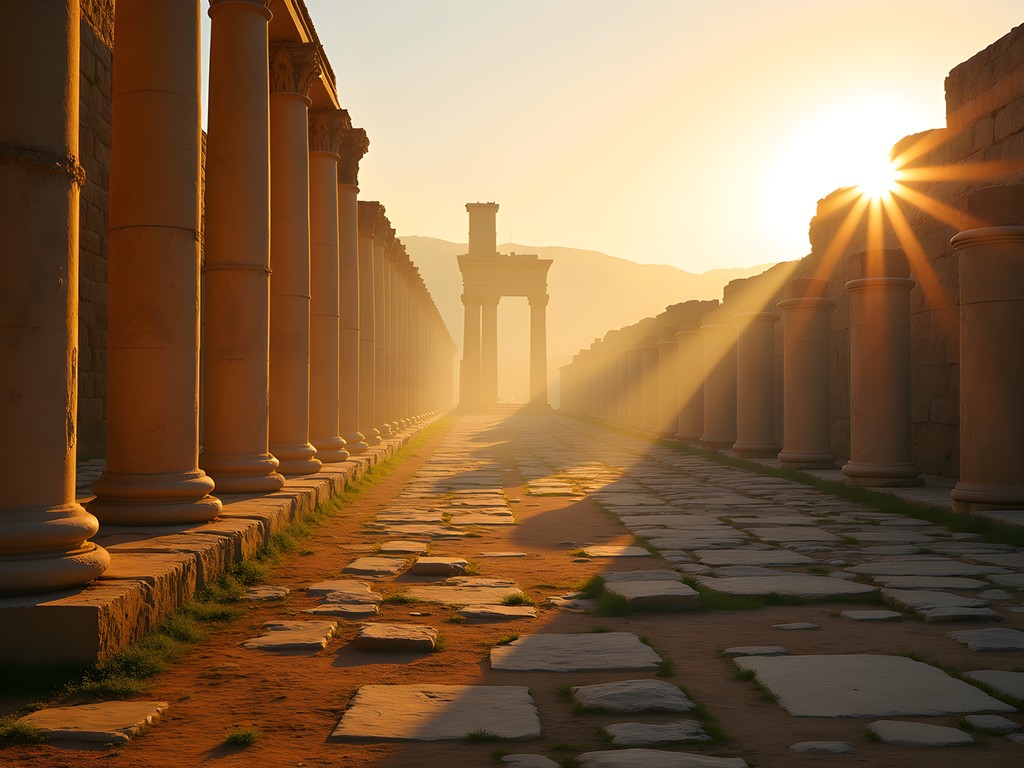
💡 Pro Tips
- Always ask permission before practicing yoga in archaeological sites—a few Arabic phrases and respectful demeanor go a long way
- Choose practice spots away from the main pathways and most fragile ruins
- Early morning offers the best combination of comfortable temperatures, beautiful light, and minimal crowds
Local Flavors: Beyond Hummus and Falafel
One of my travel philosophies is that you haven't truly experienced a place until you've shared meals with locals—preferably in their homes. While Jerash has the expected tourist restaurants near the archaeological site entrance (serving decent but overpriced mezze platters), the real culinary magic happens in the modern town that most visitors bypass entirely.
Through my guesthouse host, I was invited to a cooking lesson with his sister, who runs an informal women's cooking collective. For about 25 JOD, I spent an afternoon learning to make makmoura (a layered chicken and eggplant dish specific to northern Jordan) and shrak bread cooked on a domed metal saj.
What made this experience special wasn't just the food—though it was extraordinary—but the conversations that unfolded around the preparation. These women shared stories of how traditional Jordanian cuisine has evolved, how their grandmothers preserved techniques through occupation and modernization, and how they're now documenting recipes using the instant photo printer I noticed connected to one woman's smartphone.
For those without personal connections, the small restaurant Um Khalil (located about 10 minutes' walk from the South Gate) offers home-style cooking at reasonable prices. The owner's specialty is mansaf—Jordan's national dish of lamb cooked in fermented yogurt sauce served over rice—available by pre-order a day in advance. Bring your travel spice kit if you're inspired to recreate these flavors later; the market near the restaurant sells local za'atar and sumac blends that are far superior to anything you'll find at home.
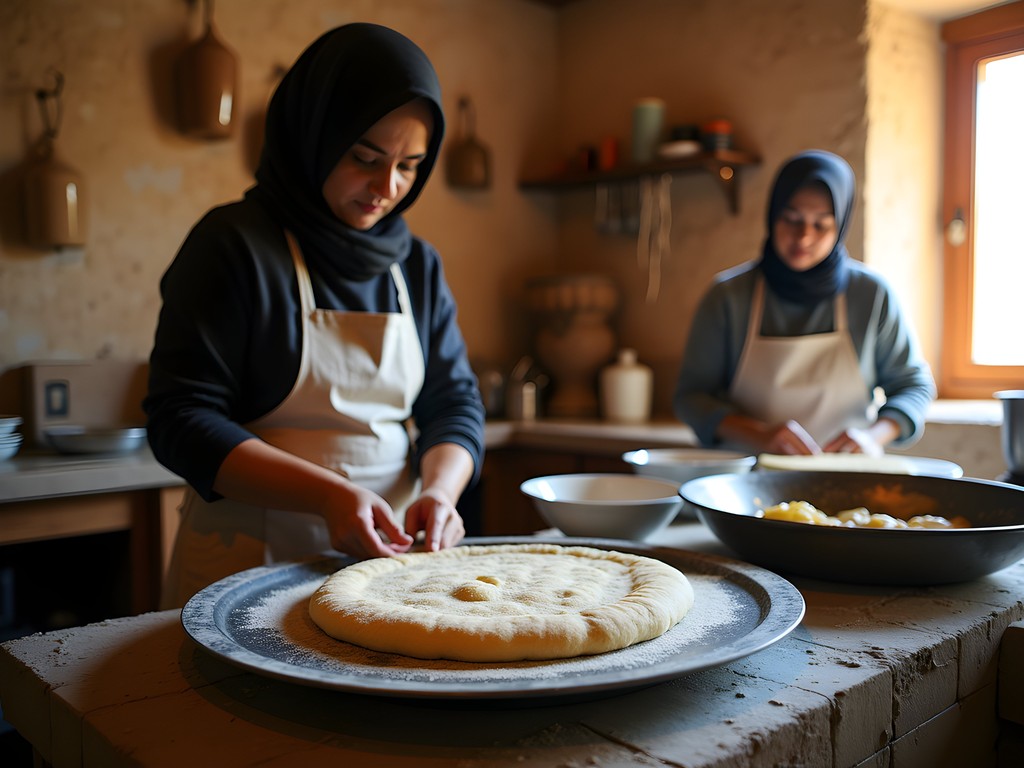
💡 Pro Tips
- Ask your accommodation host about home-cooking experiences—many families supplement their income this way but don't advertise formally
- Learn the phrase 'biddi adrub sura?' (May I take a photo?) before photographing people or their food
- Most authentic local restaurants close between 3-6pm for family meal time—plan your dining schedule accordingly
Final Thoughts
As I sat on the hillside overlooking Jerash on my final evening, watching the golden hour light transform ancient limestone from white to amber to rose, I reflected on how this place had surprised me. I came for the spectacular Roman ruins but found myself equally moved by the living culture that continues to thrive alongside them. Jerash exists in multiple timelines simultaneously—a Roman provincial capital, a Bedouin gathering place, a modern Jordanian town, and a nexus for travelers seeking connection across centuries.
For couples especially, Jerash offers that rare combination of impressive historical grandeur and intimate cultural experiences that create shared memories beyond typical tourism. Whether you're practicing morning yoga among ancient columns, sharing stories under desert stars with Bedouin hosts, or learning family recipes passed through generations, these moments of authentic connection become the souvenirs that truly matter.
As my former astronomy students know well, sometimes the most profound understanding comes not from looking at something, but from placing ourselves within it—finding our small but significant place in patterns much larger than ourselves. In Jerash, that perspective comes naturally, as easily as looking up at the night sky and feeling simultaneously humbled and connected to everything.
✨ Key Takeaways
- Visit Jerash in spring for ideal weather and fewer crowds than the summer festival season
- Connect with local families through your accommodation host for authentic cultural experiences beyond the archaeological site
- Explore the western residential quarter for a glimpse into daily Roman life that most tourists miss
- Arrange a stargazing experience with Bedouin guides for a perfect combination of cultural exchange and natural wonder
- Make time for both the ancient ruins and the modern town—they tell complementary stories about this special place
📋 Practical Information
Best Time to Visit
March-May (spring) or September-November (fall)
Budget Estimate
$75-150/day per couple (excluding flights)
Recommended Duration
2-3 days
Difficulty Level
Beginner

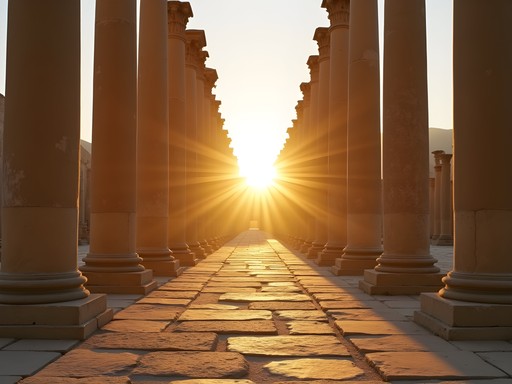
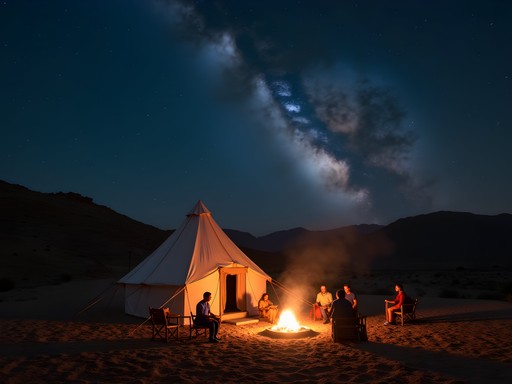
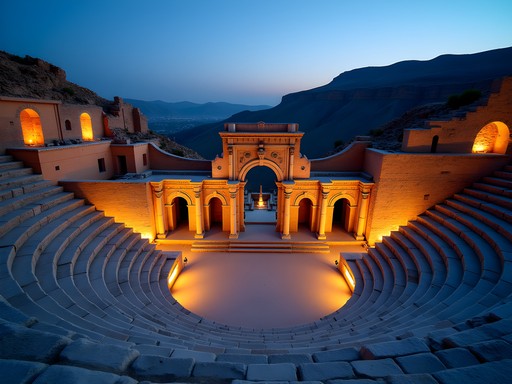
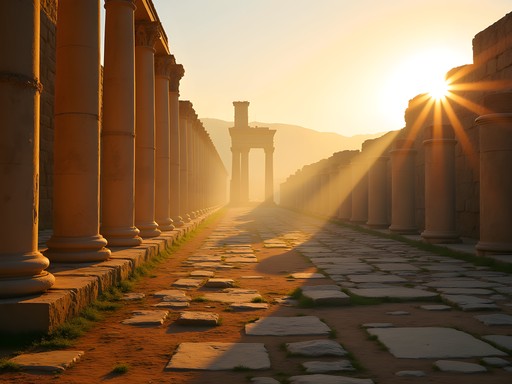
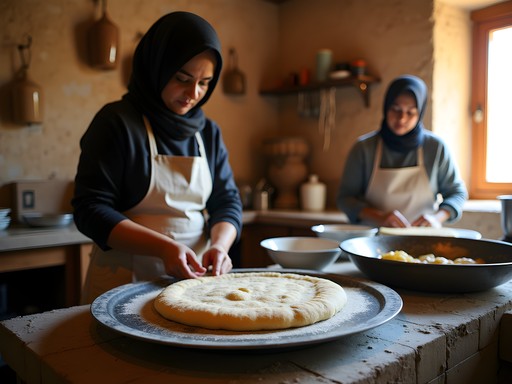









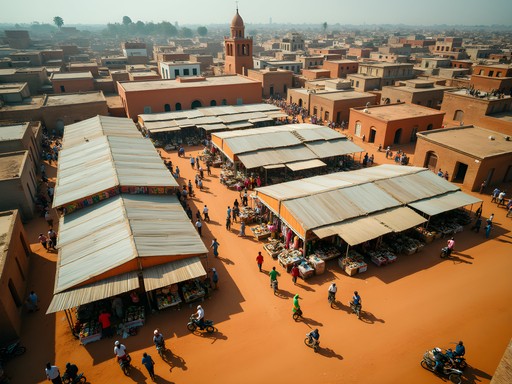
Comments
redlover
Your stargazing experience sounds incredible! How did you arrange the Bedouin tea experience? Is it something that can be booked in advance or did you connect with locals once there? Planning a trip for next spring and would love to include this!
Emma Austin
I actually met Ahmad, the Bedouin guide, through a recommendation from my hotel. Ask for 'Bedouin Stars & Tea' at the Olive Branch Hotel - they can connect you. Spring is perfect timing!
redlover
Perfect, thanks so much! Will definitely look into the Olive Branch Hotel then.
bluebuddy
I was in Jerash last month and wish I'd read this before going! We totally missed the Bedouin experience and only saw the main tourist spots. The Jerash Festival sounds amazing though - has anyone been during that time? Wondering if it gets too crowded or if the cultural performances are worth planning a trip around?
Douglas Bradley
Emma, this is exactly the kind of nuanced cultural exploration that's missing from most Jerash coverage. I visited last year but clearly missed the opportunity to connect with local Bedouins. The historical context you've provided about how the communities have evolved alongside the ruins adds tremendous depth. I particularly appreciate your section on finding solitude - I went in February and had entire sections of the site to myself, especially early mornings before the tour buses arrived. Did you find any particular time of day best for photography? The light seems exceptional in your images.
Emma Austin
Thanks Douglas! Golden hour was magical - about 90 minutes before sunset. The limestone literally changes color every 15 minutes. February is perfect timing for solitude!
Douglas Bradley
That makes sense - your golden hour shots have that perfect warm glow. I'll have to return specifically for that lighting.
globelife
Those sunset photos of the ruins are absolutely stunning! Adding Jerash to my bucket list immediately.
explorerider
Just got back from Jordan and used this guide for our Jerash visit - spot on! We took your advice about arriving early and had almost two hours before the big crowds arrived. The tip about bringing a compact travel tripod for those sunrise shots was golden. We also found a small restaurant called Al-Khayyam just outside the eastern entrance that served the best mansaf I've had in Jordan. One thing to add - if you're visiting during summer, the midday heat is brutal, so definitely follow Emma's advice about early morning or late afternoon visits.
Emma Austin
So glad the guide was helpful! And thanks for the Al-Khayyam recommendation - I'll have to try it next time. You're absolutely right about the summer heat. Did you make it to any of the less-visited sections I mentioned?
explorerider
Yes! The North Theater was practically empty and we had it all to ourselves for almost an hour. The acoustics there are incredible - we could whisper from the stage and hear it clearly at the top row.
roampro
Emma, your writing really captures the magic of Jerash! I visited three years ago but missed so much of what you described. The Bedouin experience sounds incredible - we only did the standard tourist route through the ruins. Definitely need to go back and experience it properly. Did you find the locals receptive to visitors wanting to learn about Bedouin culture or was this something special you arranged?
Emma Austin
Thanks! Most locals I met were incredibly welcoming. The key is to show genuine interest and respect. My experience was arranged through my guesthouse, but even casual conversations at local cafés led to invitations. Learning a few Arabic phrases goes a long way!
islandblogger
Yoga among the ruins?! That sounds like absolute MAGIC! Adding to my bucket list immediately!
wildking
Is it safe for solo female travelers?
Emma Austin
Absolutely! I traveled solo and felt very safe. The Jordanian people are incredibly hospitable. Just the usual precautions - modest dress at religious sites and letting your accommodation know your plans.
beachtime
Just got back and felt super safe as a solo woman! Everyone was so kind!
cityexplorer
Those sunset photos over the ruins are absolutely stunning! What time of year did you visit to get that perfect golden light?
starone
This looks amazing! I'm planning to visit Jordan next month but only have one day for Jerash. Is it worth trying to do both the ruins and connect with locals for the authentic experience, or should I just focus on the main archaeological site? Also, did you rent a car or is public transportation reliable? Thanks!
Emma Austin
With just one day, I'd recommend focusing on the ruins in the morning (get there early!) and then perhaps having a late lunch at one of the family restaurants just outside the eastern entrance - great way to meet locals without feeling rushed. I used public transportation from Amman (the buses are frequent and only about 1 JOD) but a taxi gives you more flexibility if your time is limited.
starone
Perfect, thank you! I'll plan for the early bus and follow your advice.
Venture X
Premium card with 2X miles, $300 travel credit, Priority Pass